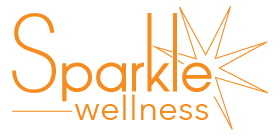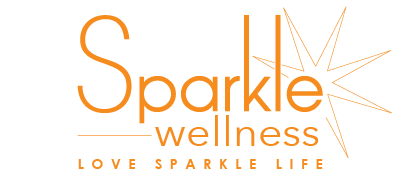3 Ways To Recover From Burnout, According to a Life Coach


Written by Allie Baker, wellness writer

Astressful job; long, grueling days of meetings, commitments, and appointments; juggling caring for kids, a partner, and aging parents. You’re struggling to keep all these plates spinning, and it feels like you’re headed for an inevitable crash. At the end of the day — sometimes even in the middle of it — you’re exhausted, foggy, and irritable. Yet you’re slogging through, putting one foot in front of the other. You’re disconnected from yourself, your passions, and the people you love. Bottom line: you don’t feel like you. Sound familiar?
If you’re thinking, ‘Yes, that’s me,’ you’re likely grappling with burnout — and you’re certainly not alone. According to a 2021 Gallup study, 76% of workers have experienced burnout. This phenomenon is even more prevalent in women. A 2022 Women in the Workplace report found that the gap between women and men who say they are burned out has nearly doubled in the last year.
Another study found that stress levels reach their peak around age 45. It’s clear that burnout is hitting midlife women hardest, so how do you combat it and reignite your life? We consult a leading life coach and share three ways to heal from the inside out.
What is burnout?
Let’s back up a minute and dive into what burnout actually means. “Burnout is a state of emotional, physical, and mental exhaustion caused by prolonged — and probably accumulated — exposure to stressors.All of us experience daily stress. It's a natural response to the demands and pressures we face in our daily lives. But, chronic and excessive stress without adequate coping mechanisms can quickly lead to burnout,” explains Michelle Phillips, a transformational life coach who works with women in their 40s, 50s, and beyond
In 2019, the World Health Organization recognized burnout as an ‘occupational phenomenon,’ but since then, experts have recognized that burnout extends far beyond the office. “It can affect so many aspects of your life, including work, relationships, and your own well-being,” Phillips says. The Catch-22 of burnout is that so many of us are chasing success in every arena of life, but in the quest to win it, we’re losing ourselves.
We also may be endangering our health because research has linked burnout to heart disease, diabetes, joint pain, headaches, gastrointestinal issues, respiratory problems, insomnia, depressive symptoms, and more health issues.
The telltale signs of burnout
The first step in healing from burnout is recognizing it. According to Phillips, these are common indicators that you are experiencing burnout:
Physical exhaustion: Persistent fatigue, low energy levels, and frequent physical ailments like headaches, muscle pain, or gastrointestinal issues.
Emotional and mental exhaustion: Feeling drained, overwhelmed, and emotionally depleted. This can be accompanied by decreased motivation and a sense of hopelessness or cynicism.
Reduced performance: Decreased productivity, difficulty concentrating, and impaired cognitive functioning, leading to decreased effectiveness in work or other areas of life.
Interpersonal difficulties: Increased irritability, conflicts with colleagues or loved ones, and withdrawal from social interactions. Is self-care the answer?
Is self-care the answer?
Often, the proposed antidote to burnout is self-care. Articles and social media accounts encourage us to take bubble baths and go for spa days to unwind. While those can be relaxing treats, they aren’t long-term, sustainable solutions.

In her book, “Real Self-Care”, board-certified psychiatrist Dr. Pooja Lakshmin, MD, discusses the difference between faux self-care and real self-care. She writes, “Faux self-care keeps us looking outward — comparing ourselves with others or striving for a certain type of perfection…Real self-care, in contrast, is an internal self-reflective process that involves making difficult decisions in line with our values, and when we practice it, we shift our relationships, our workplaces, and even our broken systems.”
Phillips agrees that the real answers will only come from within. She says, “Lifestyle changes are great for short-term recovery; however, you need to get to the core of what is causing the accumulated stress that is leading to burnout.”
3 sustainable ways to handle burnout
Phillips recommends these powerful steps to identify and reduce the sources of your stress. She deployed these strategies in her own life when she was struggling with burnout amidst a divorce, running a business, raising three small children, and financial troubles.
Try these yourself to reconnect to your own inner peace.
Identify your core values
Burnout often happens when you’re directing your time and energy toward things that do not align with your core values, which are the driving principles or ideals that guide you when making decisions, building relationships, and solving problems. Instead of simply reacting to a situation or question in front of you, “step away and figure out what is right for you before moving forward,” Phillips recommends.
Take some time to journal on questions such as:
- What characteristics do I value most in myself and others?
- What relationships are most important in my life?
- What goals feel most important and WHY?
- When do I feel most fulfilled?
- What kind of impact do I want to make to those around me or the greater community
- How do I want to feel in my everyday life?
Then, take some time to evaluate where you are currently expending the most energy and ask yourself, ‘Is that activity/commitment/job/relationship serving what I value most and how I want to feel?’ If the answer is ‘no,’ then it may be time to reprioritize it or set firmer boundaries, which we’ll dive into next. If you’re not sure of the answer, tune into your own inner voice. “Your Pintuition or ‘gut feeling’ is always right,” Phillips says. “Listen to it.”
Prioritize and delegate
You don’t need to do it all, and be all things to all people. “You can drop the ‘super’ cape,” Phillips says.
She shares an example from her own life. “I found myself waking up each morning and attempting to tackle everything that was in front of me. Keeping up with emails, text messages, and social media was taking away time from being present and supportive for my family. By the time I got through the end of the day, I was exhausted, depleted, and struggled to sleep. Why? Because all the things I didn't do that day were still causing stress and anxiety.”
It’s time to take some things off that list. Phillips suggests creating a to-do list each morning. “One one side of the paper, write down everything you feel you have to do,” she says. “Then, draw a line down the center of the page and on the other side, write down what you do not have to do.” It might be checking social media, answering a call that can wait until tomorrow, cooking an elaborate meal, or something else entirely. If it’s on the ‘don’t have to do’ side, let it go.
Next, consider what tasks you can delegate to others. “It might be as simple as asking a partner to pick up the kids or letting a client know that it will be a few more days until the project is complete,” Phillips says. “Small delegations can relieve tons of stress. It’s okay to let go and be honest when you need to ask for help.”
Set healthy boundaries
“I am a nurturer and a caretaker who doesn't like to let people down. I have so many wonderful people in my life and clients who I always want to be here for,” Phillips shares. This may sound familiar to you — and it can be tempting to put everyone else first as a default setting.
“Unfortunately, when we put ourselves on the back burner, it leads to exhaustion, resentment, and burnout, which ultimately leads to agitation and even anger,” she says. That doesn’t serve you or anyone else in your life. “Saying ‘no’ is a gift we give ourselves and others. I have realized that when I turn down work, or a night out when I really should rest, it is the best form of self-respect and self-love.”
What can you say ‘no’ to today? Set the boundary respectfully yet firmly. Remember, ‘no’ can be a complete sentence.
Through it all, be gentle with yourself and remember that you are doing your best. “In the self-help world, most people don’t tell you that none of us are immune to chaos, stress, and difficult times,” Phillips says. “Life happens.” When you allow for this and give yourself grace and permission to rest, you can begin to rekindle your spark.


